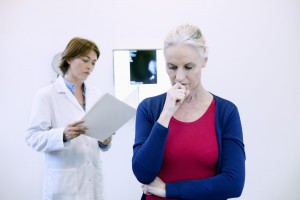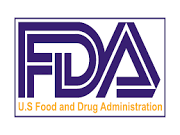
Diagnosed with Cancer? Your two greatest challenges are understanding cancer and understanding possible side effects from chemo and radiation. Knowledge is Power!
Learn about conventional, complementary, and integrative therapies.
Dealing with treatment side effects? Learn about evidence-based therapies to alleviate your symptoms.
Click the orange button to the right to learn more.
- You are here:
- Home »
- Blog »
- side effects ID and prevention »
- Prevent Cancer Relapse Secondary Cancer
Prevent Cancer Relapse Secondary Cancer

Can I prevent cancer relapse and secondary cancer? I am referring to both my own cancer relapsing and/or many of the secondary cancers that I am at increased risk of.
And I am referring to your own cancer if you are a cancer survivor. I am writing a post about preventing cancer relapse as well as preventing a secondary cancer because I read the study linked below this morning. I realized that the study points to much of what I do with my own cancer prevention efforts.
I was diagnosed with an incurable blood cancer, multiple myeloma, in 1994. Four years of aggressive conventional therapies left me with a series of short, long-term and late stage side effects preceded by
“We can do nothing more for you Mr. Emerson.”
The vast majority of those therapies that I write about on PeopleBeatingCancer.org and have included in my own life are evidence-based, non-conventional therapies. When I say “non-conventional,” I mean those therapies that have not been approved by the Food and Drug Administration aka the FDA.
I understand why the FDA does what it does. I understand the basic ideas about selling drugs.
But it is important to point out that conventional oncology failed me. I can’t overstate how seriously this failure was. What other products or service can charge you $250,000.00 only to show no benefit and leave the patient/consumer with systemic, life threatening physical and mental damage?
Further, once I figured out that conventional therapies had a serious down side aka adverse events aka side effects, I set about researching and employing evidence-based non-conventional therapies.
Which bringes me to the focus of this post.
- Many cancers are preventable
- Conventional oncology spends little if any effort on prevention
- Conventional, FDA approved “safe and effective” are not safe nor effective
My cancer prevention efforts, that is to say preventing my cancer relapsing as well as preventing a treatment-related secondary cancer, are:
- Tobacco Control:
- Avoid Smoking and Tobacco Products: The most important step is to avoid smoking cigarettes and using other tobacco products. This is the single largest preventable cause of cancer.
- Diet and Nutrition:
- Healthy Eating Habits:
- Balanced Diet: Consume a balanced diet rich in fruits, vegetables, whole grains, and lean proteins.
- Limit Processed Foods: Reduce intake of processed and red meats, as they have been linked to an increased risk of certain cancers.
- Portion Control: Avoid overeating and maintain a healthy weight.
- Limit Sugar and Salt: Reduce consumption of sugary and salty foods and beverages.
- Stay Hydrated: Drink plenty of water and limit sugary drinks and alcohol.
- Healthy Eating Habits:
- Physical Activity:
- Regular Exercise: Engage in regular physical activity, such as walking, jogging, swimming, or other forms of exercise. Aim for at least 150 minutes of moderate exercise per week.
- Sun Protection:
- Limit Sun Exposure: Avoid excessive exposure to ultraviolet (UV) radiation from the sun, especially during peak hours (10 a.m. to 4 p.m.).
- Use Sunscreen: Apply broad-spectrum sunscreen with SPF 30 or higher, and reapply regularly, especially after swimming or sweating.
- Wear Protective Clothing: Use hats, sunglasses, and clothing that cover the skin to minimize UV exposure.
- Limit Alcohol Consumption:
- Moderation: If you choose to drink alcohol, do so in moderation. For example, limit it to one drink per day for women and two drinks per day for men.
- Occupational and Environmental Hazards:
- Minimize Exposure: If possible, avoid prolonged exposure to harmful chemicals, toxins, and pollutants at the workplace or in the environment.
- Regular Health Check-ups:
- Screenings: Participate in regular screenings and early detection programs for various cancers (e.g., mammograms, Pap smears, colonoscopies) based on age and risk factors.
- Infectious Disease Prevention:
- Practice Safe Sex: Use protection during sexual activity to reduce the risk of sexually transmitted infections (STIs) that can lead to certain cancers.
- Stress Management and Mental Health:
- Stress Reduction: Practice stress-reducing techniques like mindfulness, meditation, yoga, and deep breathing exercises.
- Seek Support: Seek professional help or support from friends and family to manage mental health challenges.
- Genetic Counseling and Testing:
- Family History: If you have a family history of certain cancers, consider genetic counseling and testing to understand your risk and take appropriate measures.
- Breastfeeding:
- Breastfeed if Possible: Breastfeeding may reduce the risk of breast cancer for both the mother and child.
- Avoid Harmful Habits:
- Limit Hormone Replacement Therapy (HRT): If possible, avoid long-term use of hormone replacement therapy, as it may increase the risk of certain cancers.
Full disclosure- I sunburned regularly as a teen, I drank too much beer in my twenties, my diet was no where close to the above and I didn’t practice safe sex. My point is that this post is not about cancer prevention, it is about preventing my cancer relapsing as well as preventing treatment-related secondary cancer.
Have you been diagnosed with cancer? Are you a cancer survivor yourself? Let me know-
David.PeopleBeatingCancer@gmail.com
David Emerson
- Cancer Survivor
- Cancer Coach
- Director PeopleBeatingCancer
Experts Question Finding That 70% Cancer Deaths Preventable
“More than two thirds of premature cancer-related deaths — 3.6 million, or 68% — were potentially preventable through lifestyle changes or early detection efforts, such as cancer screening, dietary changes, or smoking cessation, and about one third — 1.65 million, or 31% — may have been treatable…
Nilanjan Chatterjee, PhD, Bloomberg Distinguished Professor, Bloomberg School of Public Health at Johns Hopkins University, Baltimore, Maryland, said the study does a “great job in bringing a lot of diverse data together to show there is very high potential for preventing premature deaths due to cancer worldwide…”
However, for a variety of reasons, Chatterjee explained, one should not “overinterpret” the high percentage of potentially preventable cancer deaths…
“It’s likely many cancer deaths are, in theory, preventable, but the numbers around just how many are necessarily vague,” said Meyerowitz-Katz. “Also, ‘in theory preventable’ doesn’t necessarily mean that we can actually do it in practice…”
The study, led by researchers from the World Health Organization’s International Agency for Research on Cancer (IARC) and partners, provides estimates of premature deaths from 36 cancers across 185 countries…
Reducing exposure to four main risk factors —
- tobacco smoking,
- alcohol consumption,
- high body weight,
- and infections —
would go a long way toward reducing potentially preventable premature cancer-related deaths, the authors said…
Lifestyle Modifications and Policy Implications for Primary and Secondary Cancer Prevention: Diet, Exercise, Sun Safety, and Alcohol Reduction
“Improved cancer treatments and cancer detection methods are not likely to completely eradicate the burden of cancer. Primary prevention of cancer is a logical strategy to use to control cancer while also seeking novel treatments and earlier detection…”


